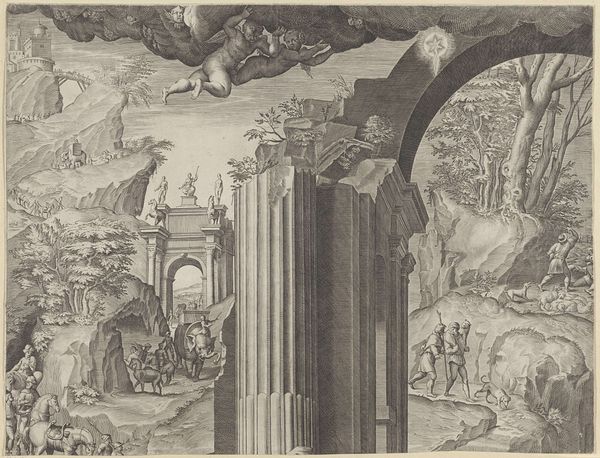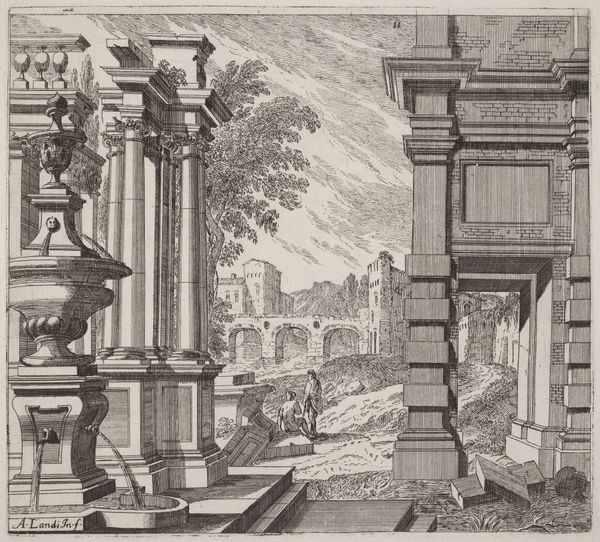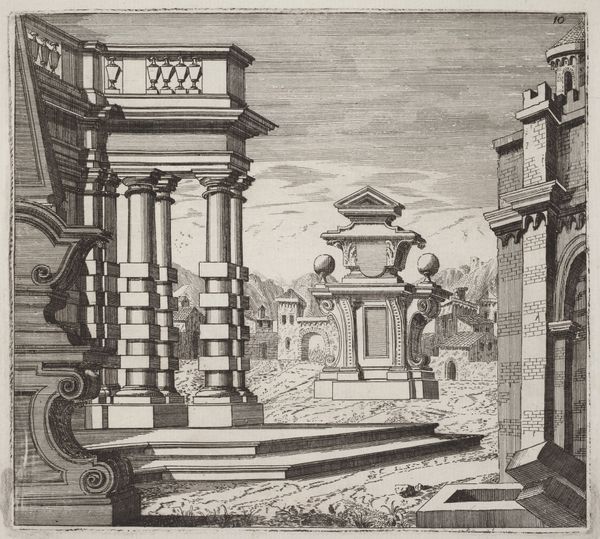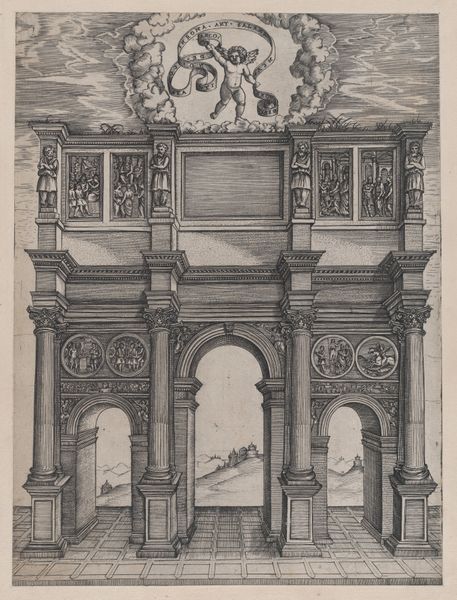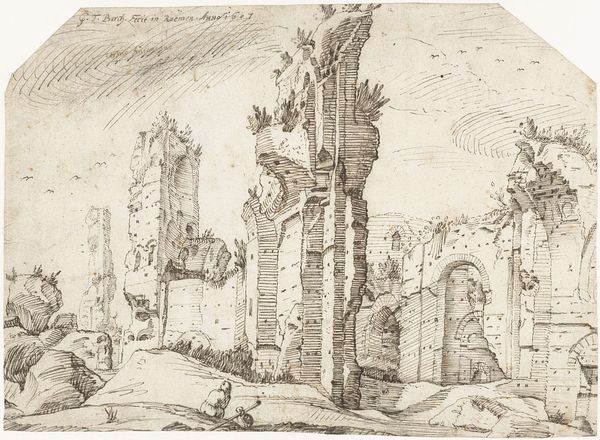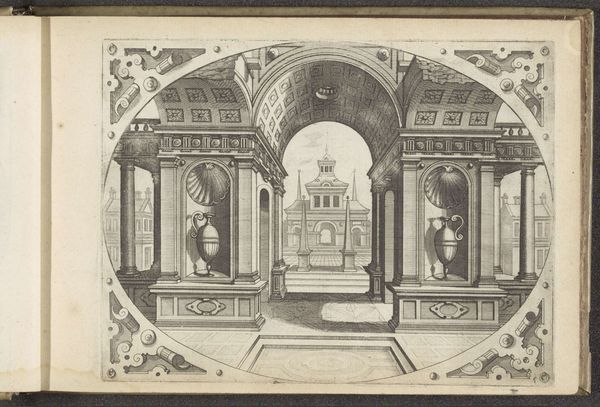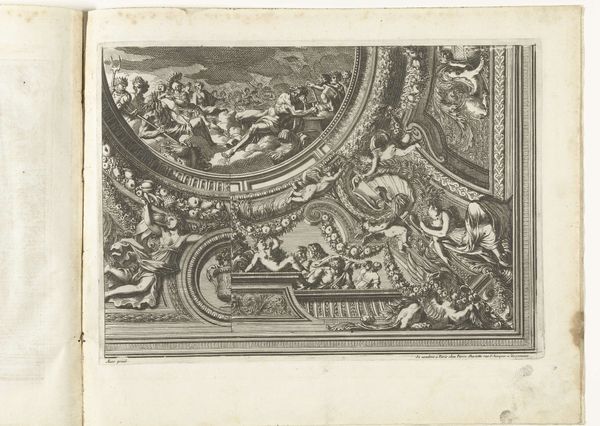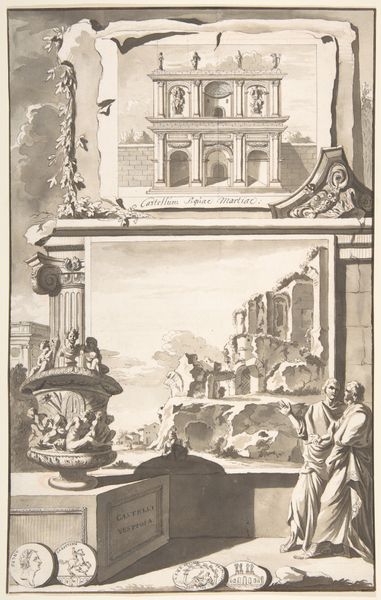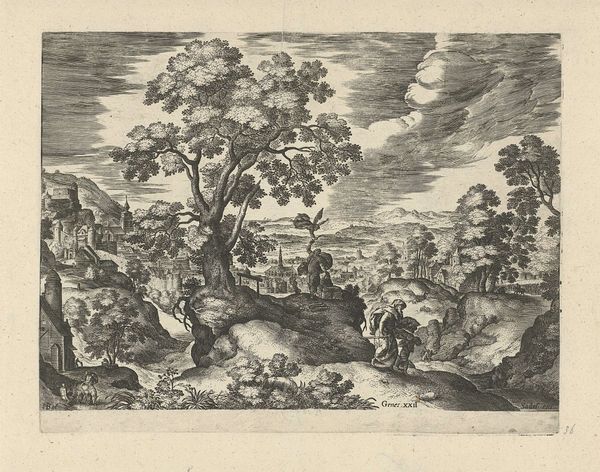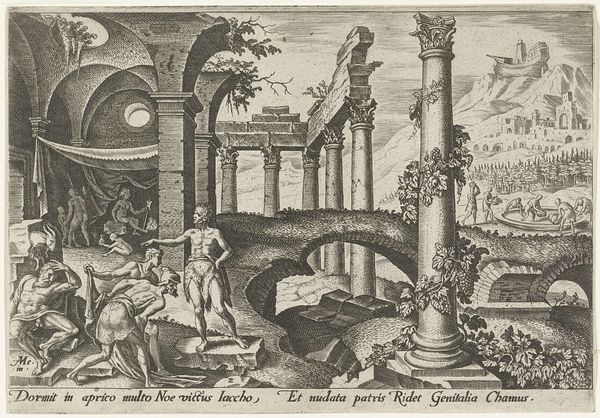
Dimensions: height 396 mm, width 520 mm
Copyright: Rijks Museum: Open Domain
Editor: So, this is "Adoration of the Magi (upper right part)," an engraving by Agostino Carracci, made sometime between 1567 and 1602. It’s incredibly detailed, and the composition is so dynamic with that stark contrast between the architecture on the left and the activity on the right. How do you interpret this piece? Curator: Well, it's important to acknowledge the socio-political context here. This isn't just a simple religious scene; it reflects the power dynamics of the time. Who are the Magi? They represent different parts of the world coming to pay homage. Carracci is making a statement about European dominance. What about the elephant; what does its cultural status or treatment suggest to you? Editor: I never thought about it that way, about the Magi being a representation of different cultures bowing to European power! I see the elephant, and its handlers…it almost feels like a display of exoticism. Curator: Exactly. Renaissance art often served as propaganda, subtly reinforcing the existing power structures. The composition, that you mentioned earlier, further emphasizes this. Notice how the "civilized" architecture dominates the left side, and this contrasts with the exotic orient represented on the right? Editor: I see what you mean. The detail in the architecture is imposing, like it's meant to convey power. The elephant becomes a symbol of the resources and peoples being controlled. It’s unsettling when viewed this way. Curator: It's crucial to look beyond the surface and understand how art reflects and reinforces societal norms and biases. Considering race, class, and gender dynamics present at the time adds layers of depth. Editor: That’s a powerful perspective. I came in thinking about the beautiful detail and composition, but now I see how that detail contributes to a much larger and complex narrative of power. Thanks so much. Curator: Remember, art is never created in a vacuum. By analyzing its social and historical context, we can reveal so much more about its meaning and impact.
Comments
No comments
Be the first to comment and join the conversation on the ultimate creative platform.
